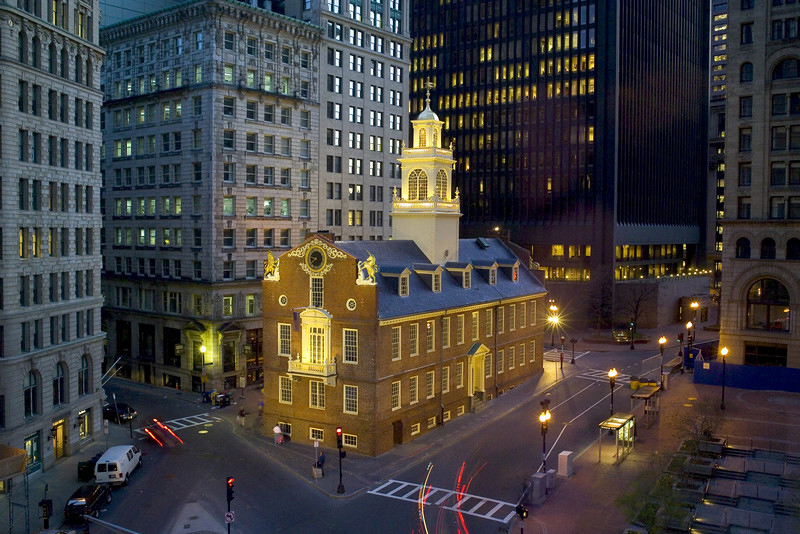A committee proposed
that they should go at four o’Clock this Afternoon, to view the Common and Fort-Hill, and determine which was the most convenient Place to build a new Court-House; as the said Committee were divided in their Sentiments upon that Affair.The lower house then voted not to approve that plan and discuss the whole matter “Wednesday next.” So the project wasn’t really off to a fast start.
Finally 9 March came around. After debate the house came to an important decision:
That the late Court-House in the Town of Boston be repair’d, as soon as conveniently may be, and that one Half the Charge thereof be borne by the Province, the other Half by the County of Suffolk and the Town of Boston.The next day, a second vote clarified that the county and town should each pay a quarter of the cost. The house named a committee headed by speaker Thomas Hutchinson to buy building materials, prepare an architectural plan, and estimate the budget. The Council, which appears to have been holding out for this result, quickly agreed with both those votes.
Thus, after a month of decisions that the new Court-House should be built in Cambridge, Roxbury, and somewhere new in Boston, the legislature determined to simply rebuild their old home. And that’s why we still have the Old State House with its 1713 walls in downtown Boston.
By the end of the month, Hutchinson’s committee had completed a design for the rebuilt interior and a budget of £18,104—in that inflated “Old Tenor” currency. The actual cost was totaled in October 1750 as £3,705.11s.4d “Lawful Money.” By that time, the Massachusetts government had implemented Hutchinson’s plan for stabilizing its notes.
A merchant named Francis Goelet visited Boston in 1750 and described how good the Town House looked:
It’s a very Grand Brick Building, Arch’d all Round, and Two Storie Heigh, Sash’d above; its Lower Part is always Open, design’d as a Change, tho’ the Merchants in Fair Weather make their Change in the open Street at the Eastermost End. In the upper Story are the Council and Assembly Chambers &c. It has a neat Capulo, sash’d all round, and which on rejoycing days is Elluminated.Thomas Hutchinson had succeeded in keeping the General Court in Boston, and in easing inflation. However, as fallout from his currency plan, in May 1750 the Boston town meeting chose not to reelect him to the house. (His legislative colleagues elevated him to the Council instead, where he served until 1766.)
One curiosity about the discussion of where to build the Court-House from December 1747 to March 1748 is that it appears to have never been reported in the newspapers. There were close votes in the house, disagreements between the two legislative chambers, and a revived opposition press in the Independent Advertiser—a situation that seems conducive to leaks. But I can’t see a mention of the controversy.
I don’t know the private sources from this period well, but I’ve found no other sign of public discussion about where to locate the building, either. The records of Boston’s selectmen and town meetings don’t mention the rebuilt Town House until it came time in 1751 to pay the bill.
A later curiosity is that when the Old State House was rededicated as a museum in 1882, the 180-page official city record of the program, full of speeches and transcriptions from historic documents down to Thomas Crafts’s repainting bill from 1773, doesn’t mention those months of indecision. The quoted legislative record just skips all the votes in February.
That brief period in 1748 appears to be one of the few times that the Massachusetts government considered making some town outside Boston into the permanent seat of government. As I discussed back here, it’s very unusual for a colonial capital to remain a state capital. And the gaps in the record make it feel almost as if Boston interests don’t want to let word out that people considered moving the government anywhere else.

Interesting comment about its being "Arch’d all Round". All of the building's window and door openings are square, not arched, except for the two main entrances (one on the north, one on the south). Even for those, the brick openings are square, but the inner doors have fanlights. And those may be a later addition.
ReplyDeleteAnd Nathaniel Hurd's 1751 view of the building -- which you showed in your post on June 9 -- shows that it was the same back then, as well.
Hurd's view also shows that the first floor window openings are "sash'd", not just :above".
I believe the openings are indeed "arched all round", though they are "flat brick arches" rather than the semi-circular form most think of when they hear the term. They would be considered arches because the wall load on the heads of openings is transferred laterally by skewed bricks in compression, rather than a solid stone or wood lintel in both tension and compression.
ReplyDelete